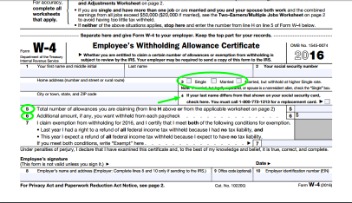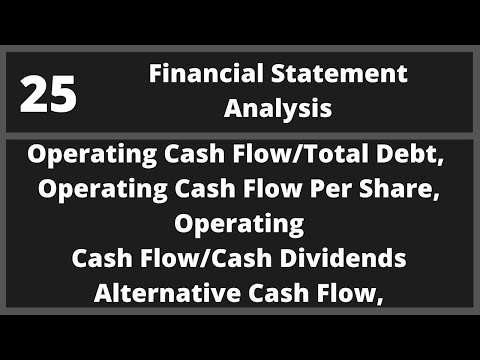Instead of combining the adjustments and placing the result in one of the adjusted trial balance columns, both adjustments are transferred to the adjusted trial balance columns and then to the income statement columns. Income summary’s debit entry on the work sheet is used to report the beginning inventory balance on the income statement, and income summary’s credit entry is used to report the ending inventory balance on the income statement. I am trying to correct the COGS from last year for a company but I am not sure of the best way to do it. At the beginning of the year all purchases for resale were being recorded directly to COGS. In May someone decided to set up the inventory tracking system in Quickbooks, and recorded beginning inventory balances to the inventory asset account.

For milk and other „quick turnaround” products, just post them to COGS directly. Well, if you have no outside expense to add to that inventory item, you don’t need to accumulate what is federal excise tax, and when do you have to pay it that anywhere so that the Adjustment function can be used. The point of this topic is that a JE cannot be used for managing QB inventory item Type transactions.
Inventory Adjustment Chart of Accounts
Normally, no significant adjustments are needed at the end of the period (before financial statements are prepared) since the inventory balance is maintained to continually parallel actual counts. To prepare the financial statements, a company will look at the adjusted trial balance for account information. From this information, the company will begin constructing each of the statements, beginning with the income statement. The statement of retained earnings will include beginning retained earnings, any net income (loss) (found on the income statement), and dividends. The balance sheet is going to include assets, contra assets, liabilities, and stockholder equity accounts, including ending retained earnings and common stock.
A Beginner’s Guide to the Post-Closing Trial Balance – The Motley Fool
A Beginner’s Guide to the Post-Closing Trial Balance.
Posted: Wed, 18 May 2022 17:00:09 GMT [source]
The first adjusting entry clears the inventory account’s beginning balance by debiting income summary and crediting inventory for an amount equal to the beginning inventory balance. We will look at the how the merchandise inventory account changes based on these transactions. The physical inventory count of $31,000 should match the reported ending inventory balance.
How to Account for Expenses Incurred But Paid in the Future on a Balance Sheet
How should I be entering my inventory items without making this same error? I’m not sure how this occurred, the only explanation I can think of is when I was adding the expense/item for this inventory which probably caused the additional inventory quantity. Client is saying that I need to have recorded this in a way that the sales of products(Furniture) should not show in sales.
Ending inventory was made up of 75 units at $27 each, and 210 units at $33 each, for a total FIFO perpetual ending inventory value of $8,955. Textbooks may change the balance in the account Inventory (under the periodic method) through the closing entries. When we post this adjusting journal entry, you can see the ending inventory balance matches the physical inventory count and cost of good sold has been increased. An inventory account must be closed at the end of a company’s accounting period.

In summary, adjusting journal entries are most commonly accruals, deferrals, and estimates. It is important to note that these answers can differ when calculated using the perpetual method. When perpetual methodology is utilized, the cost of goods sold and ending inventory are calculated at the time of each sale rather than at the end of the month. For example, in this case, when the first sale of 150 units is made, inventory will be removed and cost computed as of that date from the beginning inventory. The differences in timing as to when cost of goods sold is calculated can alter the order that costs are sequenced.
Ending retained earnings information is taken from the statement of retained earnings, and asset, liability, and common stock information is taken from the adjusted trial balance as follows. The balance sheet is the third statement prepared after the statement of retained earnings and lists what the organization owns (assets), what it owes (liabilities), and what the shareholders control (equity) on a specific date. Remember that the balance sheet represents the accounting equation, where assets equal liabilities plus stockholders’ equity.
Ending Inventory and Cost of Goods Sold
Here we will demonstrate the mechanics used to calculate the ending inventory values using the four cost allocation methods and the periodic inventory system. Damaged inventory or inventory that is outdated may have to be written off when it cannot be returned to a supplier for credit. Sometimes shoplifters or dishonest employees make off with merchandise. The other main issue that requires adjusting entries in journal accounts is change in the amount of inventory on hand from one accounting period to another. These changes must be reported on the firm’s income statement and balance sheet, which requires specific entries in certain accounts.
Average Cost Method: Definition and Formula with Example – Investopedia
Average Cost Method: Definition and Formula with Example.
Posted: Tue, 27 Sep 2022 07:00:00 GMT [source]
Providing the business is comfortable that its gross margin estimate is reasonably accurate, this process can continue until the business is in a position to carry out a physical inventory count. If the business now moves into its next accounting period, it has beginning inventory of 2,000 (last months ending inventory). This time the goods available for sale are the purchases plus the beginning inventory, and as before, the cost of the goods not sold is the ending inventory. When you purchase them, you can record a vendor transaction with the items, and this will increase their counts. However, if you have items on hand before starting your business, you’ll enter the quantity the moment you create them in QuickBooks. If you look in the balance sheet columns, we do have the new, up-to-date retained earnings, but it is spread out through two numbers.
What Is Merchandising Inventory?
This did reduce the COGS slightly, but the amount is still too high based on the amount of sales that occurred before inventory tracking was set up in May. I need to make another adjustment that does not affect the inventory asset account, as that balance is actually correct. Inventory may require adjusting entries at the end of an accounting period to ensure that the financial statements accurately reflect the value of the inventory on hand. The adjusting entry is necessary to recognize any inventory that has been sold but not yet recognized in the accounting records or any inventory that has been acquired but not yet recorded.
The inventory at period end should be $6,795, requiring an entry to increase merchandise inventory by $3,645. Cost of goods sold was calculated to be $9,360, which should be recorded as an expense. As you’ve learned, the periodic inventory system is updated at the end of the period to adjust inventory numbers to match the physical count and provide accurate merchandise inventory values for the balance sheet. The adjustment ensures that only the inventory costs that remain on hand are recorded, and the remainder of the goods available for sale are expensed on the income statement as cost of goods sold.
Additionally, periodic reporting and the matching principle necessitate the preparation of adjusting entries. Remember, the matching principle indicates that expenses have to be matched with revenues as long as it is reasonable to do so. To follow this principle, adjusting entries are journal entries made at the end of an accounting period or at any time financial statements are to be prepared to bring about a proper matching of revenues and expenses. Beginning merchandise inventory had a balance of $3,150 before adjustment. The inventory at period end should be $8,955, requiring an entry to increase merchandise inventory by $5,895. Journal entries are not shown, but the following calculations provide the information that would be used in recording the necessary journal entries.
- Merchandise inventory, before adjustment, had a balance of $3,150, which was the beginning inventory.
- Normally, no significant adjustments are needed at the end of the period (before financial statements are prepared) since the inventory balance is maintained to continually parallel actual counts.
- Remember that adding debits and credits is like adding positive and negative numbers.
The second sale of 180 units consisted of 20 units at $21 per unit and 160 units at $27 per unit for a total second-sale cost of $4,740. Thus, after two sales, there remained 10 units of inventory that had cost the company $21, and 65 units that had cost the company $27 each. Ending inventory was made up of 10 units at $21 each, 65 units at $27 each, and 210 units at $33 each, for a total specific identification perpetual ending inventory value of $8,895. Income statement accounts that may need to be adjusted include interest expense, insurance expense, depreciation expense, and revenue. The entries are made in accordance with the matching principle to match expenses to the related revenue in the same accounting period. The adjustments made in journal entries are carried over to the general ledger that flows through to the financial statements.
What Are the Types of Adjusting Journal Entries?
When the firm’s income statement and balance sheet are prepared using the adjusted accounts, the new totals report the value of inventory owned. Step 3) To decrease inventory by $3,000, the company would debit cost of goods sold for $3,000 and credit inventory for $3,000. On the rare occasion when the physical inventory count is more than the unadjusted inventory balance, we increase (debit) inventory and decrease (credit) cost of goods sold for the difference. Breakage could occur in companies that produce items that could be affected either due to a fall or some other reasons that may make them break.